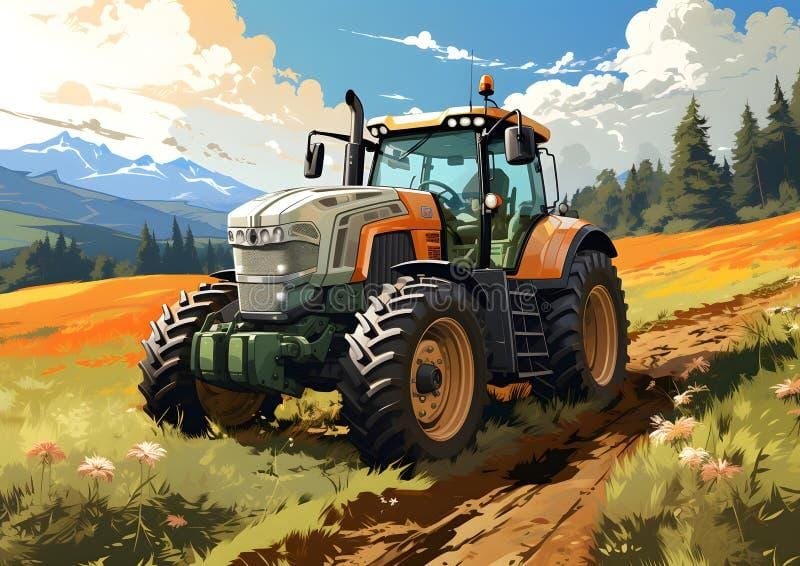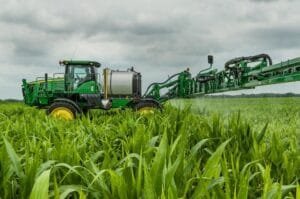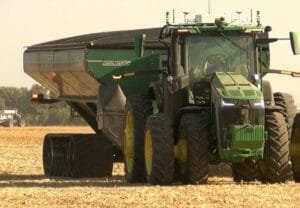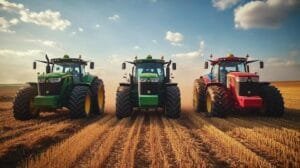Farming landscapes transform swiftly these days. The emergence of autonomous tractors represents a watershed moment for agricultural innovation, offering solutions to persistent challenges that have troubled the industry for generations. Labor shortages plague modern farming operations across various sectors. The American Farm Bureau Federation estimates approximately 2.4 million farm positions require filling annually. This vacuum of skilled workers creates fertile ground for technological intervention.
John Deere unveiled several autonomous machines during CES 2025, building upon foundations established three years prior. Their second-generation autonomy kit combines sophisticated computer vision, artificial intelligence, and cameras to navigate complex environments without human guidance. These systems don’t merely replicate human capabilities-they transcend certain limitations through unwavering focus and precision deployment.
The concept of autonomous agricultural vehicles arrives in varied implementations. Fully autonomous tractors operate without direct human control, leveraging GPS, AI, cameras, and assorted sensors to perform tasks independently. Somewhat peculiarly, these machines offer both productivity increases and cost reductions simultaneously, a pairing that traditional agricultural economics rarely delivered. Monarch’s MK-V currently stands as the sole fully autonomous-ready tractor available commercially, though competitors hover at various stages of development.
Deere’s newest offerings include the impressive electric E-Power tractor, capable of delivering 130 horsepower through its battery system providing continuous 100 kW output. The manufacturer designed this machine specifically for high-value crops such as vegetables and grapes. Possibly contradicting earlier adoption timelines, Deere has remained tight-lipped regarding commercial availability dates despite public demonstrations.
Their autonomous 9RX tractor showcases remarkable environmental awareness through sixteen strategically positioned cameras housed in protective pods. This arrangement furnishes the vehicle with comprehensive 360-degree perception. They watch everything, all the time.
For specialized applications, Deere developed the autonomous 5ML tractor specifically for orchard environments. This innovation tackles air blast spraying-traditionally a demanding, repetitive task requiring careful attention. Advanced Light Detection and Ranging (Lidar) sensors empower navigation through densely packed canopies typical of orchard settings. The sensors paint invisible pictures of the surrounding landscape, interpreting spatial relationships that would challenge even experienced human operators.
Autonomous technology adoption follows an evolution rather than revolution. Deere implemented automatic steering capabilities on tractors since the 1990s, gradually enhancing autonomous functions. The company announced their 2025 tractors will feature expanded autonomy capabilities, further blurring distinctions between operator-assisted and fully independent operation.
The benefits extend beyond merely addressing labor shortages. These mechanical farmhands operate with unprecedented accuracy during crucial tasks-planting, tilling, fertilizing, and harvesting. The machines work tirelessly without complaint about long hours or monotonous conditions. Their precision minimizes waste of expensive inputs while maximizing yield potential through optimal placement and timing.
Implementation challenges remain substantial nevertheless. Specialty farms present intricate systems with unique attributes demanding tailored approaches for autonomous technology deployment. Achieving peak performance requires extensive equipment testing across diverse conditions-varying row spacings, crop varieties, supporting infrastructure, available turning areas in headlands, and regional landscape features all influence operational parameters.
Diesel variants currently dominate the autonomous tractor space, though electric alternatives gain momentum. Deere plans future battery-powered versions matching current diesel models in capability and size. This dual-track development acknowledges transitional realities facing modern agriculture, where infrastructure limitations sometimes hamper immediate electrification efforts.
The autonomous revolution addresses more than agricultural challenges. Construction contractors report troubling workforce shortages, with 88% struggling to secure skilled labor. Similarly, landscaping businesses face hiring hurdles, as 86% cannot fill open positions. These parallel challenges across sectors create common cause for autonomy development that transcends traditional industry boundaries.
“Our agriculture, construction, and commercial landscaping customers all have work that must get done at certain times of day and year, yet there is not enough available and skilled labor,” noted Jahmy Hindman, Chief Technology Officer at John Deere. He cut straight to the chase. Autonomous technology bridges this gap while reimagining centuries-old agricultural practices.
The tractors of tomorrow don’t merely drive themselves-they represent farming’s technological maturation. As these innovations proliferate across fields worldwide, they herald significant shifts in how humanity cultivates its essential resources.







